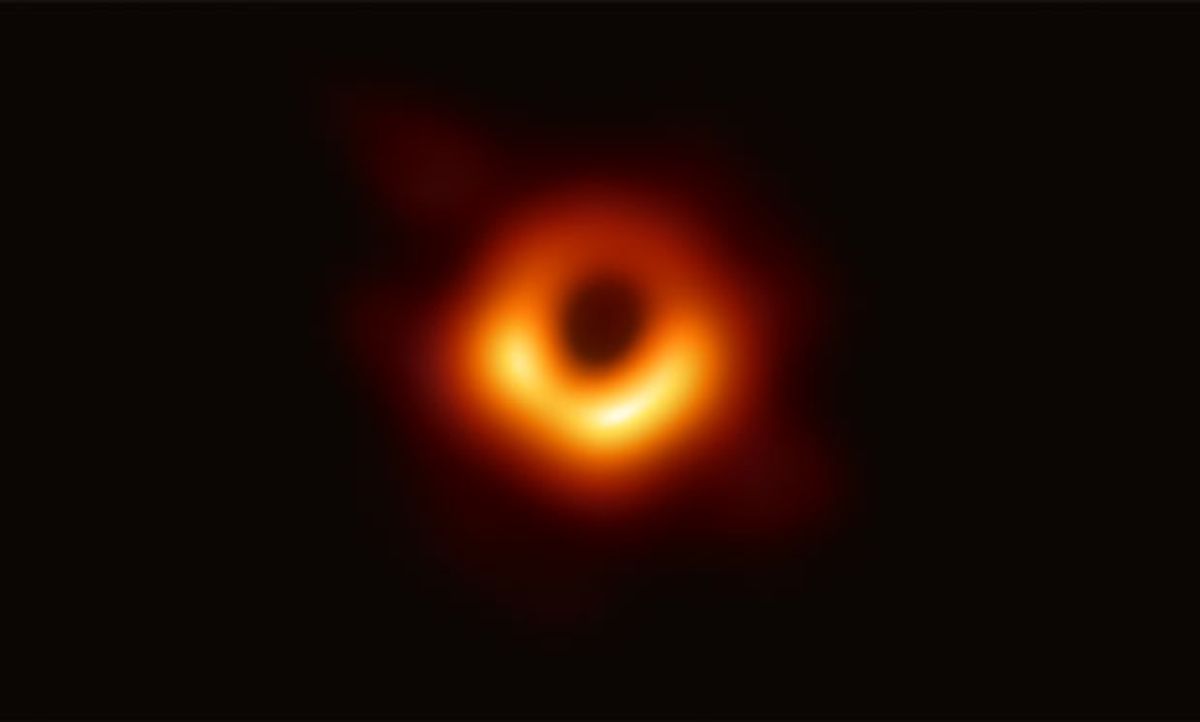A newly developed graphene-based telescope detector may usher in a new wave of astronomical observations in a band of radiation between microwaves and infrared light. Applications including medical imaging, remote sensing, and manufacturing could ultimately be beneficiaries of this detector, too.
Microwave and radio-wave radiation oscillate at frequencies measured in gigahertz or megahertz—slow enough to be manipulated and electronically processed in conventional circuits and computer systems. Light in the infrared range (with frequencies beginning around 20 terahertz) can be manipulated by traditional optics and imaged by conventional CCDs.
But the no-man’s land between microwaves and infrared (known as the “terahertz gap”) has been a challenging although not entirely impossible band in which astronomers could observe the universe.
To observe terahertz waves from astronomical sources first requires getting up above the atmosphere or at least up to altitudes where Earth’s atmosphere hasn’t completely quenched the signal. The state of the art in THz astronomy today is conducted with superconducting detectors, says Samuel Lara-Avila, associate research professor in the department of microtechnology and nanoscience at Chalmers University of Technology, in Sweden.
Observatories like the Atacama Large Millimeter/submillimeter Array (ALMA), in Chile, and the South Pole Telescope might use such detectors combined with local oscillators pumping out reference signals at frequencies very close to those of the target signal the astronomers are trying to detect. If a telescope is looking for radiation at 1 THz, adding a local oscillator at 1.001 THz would produce a combined signal with beat frequencies in the 1-GHz (0.001-THz) range, for instance. And gigahertz signals represent a stream of data that won’t overwhelm a computer’s ability to track it.
Sounds simple. But here’s the rub: According to Lara-Avila, superconducting detectors require comparatively powerful local oscillators—ones that operate in the neighborhood of a microwatt of power. (That may not sound like much, but the detectors operate at cryogenic temperatures. So a little bit of local oscillator power goes a long way.)
By contrast, the new graphene detector would require less than a nanowatt of local oscillator power, or three orders of magnitude less. The upshot: A superconducting detector in this scenario might generate a single pixel of resolution on the sky, whereas the new graphene technology could enable detectors with as many as 1,000 pixels.
“It’s possible to dream about making [THz] detector arrays,” Lara-Avila says.
Probably the most famous observation in THz or near-THz astronomy is by the Event Horizon Telescope [above], which earlier this month won the Breakthrough Prize in Fundamental Physics. Some of the frequencies at which it operated, according to Wikipedia, were between 0.23 and 0.45 THz.
The graphene detector pioneered by Lara-Avila and colleagues in Sweden, Finland, and the United Kingdom is described in a recent issue of the journal Nature Astronomy.
The group doped its graphene by adding polymer molecules (like good old 2,3,5,6-Tetrafluoro-7,7,8,8-tetracyanoquinodimethane, or F4-TCNQ ) atop the pure carbon sheets. Tuned just right, these dopants can bring the ensemble to a delicate quantum balance state (the “Dirac point”) in which the system is highly sensitive to a broad range of electromagnetic frequencies from 0.09 to 0.7 THz and, the group speculates, potentially higher frequencies still.
All of which adds up to a potential THz detector that, the researchers say, could represent a new standard for THz astronomy. Yet astronomical applications for technology often represent just the first wave of technology that labs and companies spin off for many more down-to-earth applications. That CCD detector powering the cameras on your cellphone originated in no small part from the work of engineers in the 1970s and ’80s developing sensitive CCDs whose first applications were in astronomy.
Terahertz technologies for medical applications, remote sensing, and manufacturing are already works in progress. This latest graphene detector could be a next-generation development in these or other as yet unanticipated applications.
At this point, says Lara-Avila, his group’s graphene-based detector version 1.0 is still a sensitive and refined piece of kit. It won’t directly beget THz technology that would find its way into consumers’ pockets. More likely, he says, is that this detector could be lofted into space for next-gen THz orbital telescopes.
“It’s like the saying that you shouldn’t shoot a mosquito with a cannon,” says co-author Serguei Cherednichenko, professor of Microtechnology and Nanoscience at Chalmers University. “In this case, the graphene detector is a cannon. We need a range and a target for that.”
This post was updated on 28 September 2019.
Margo Anderson is senior associate editor and telecommunications editor at IEEE Spectrum. She has a bachelor’s degree in physics and a master’s degree in astrophysics.



